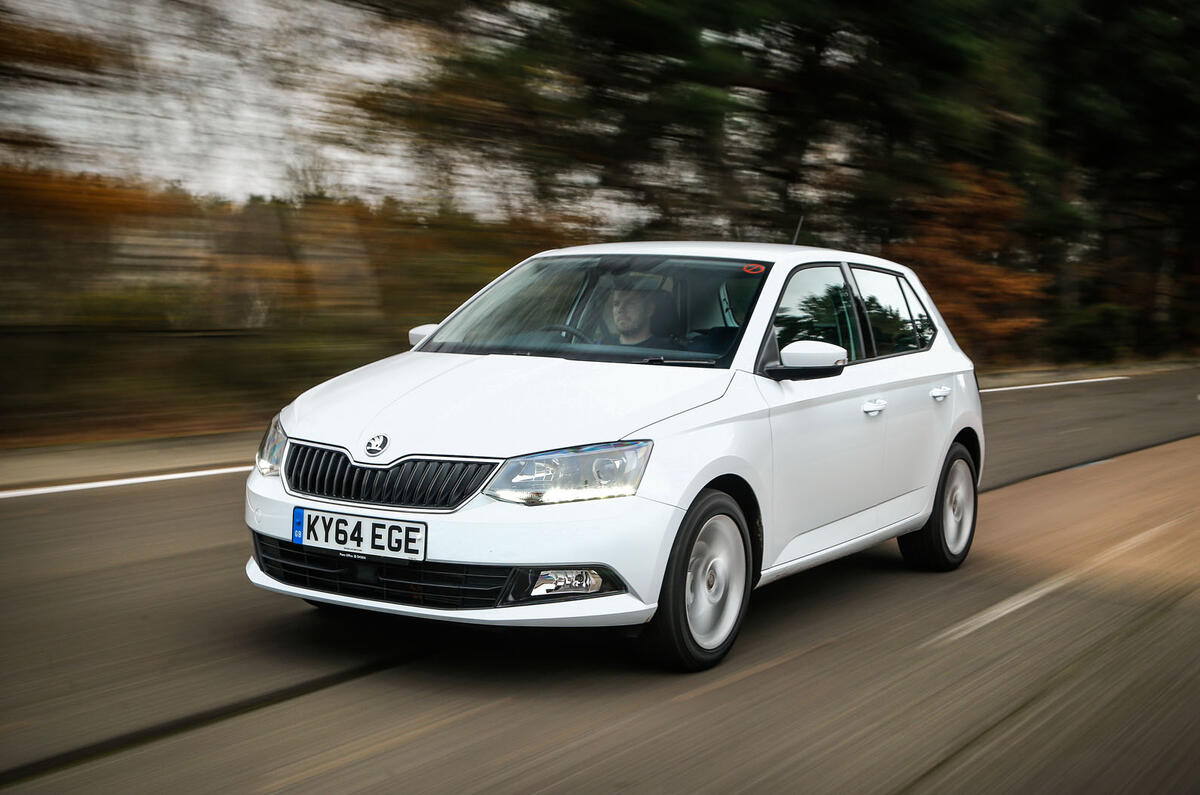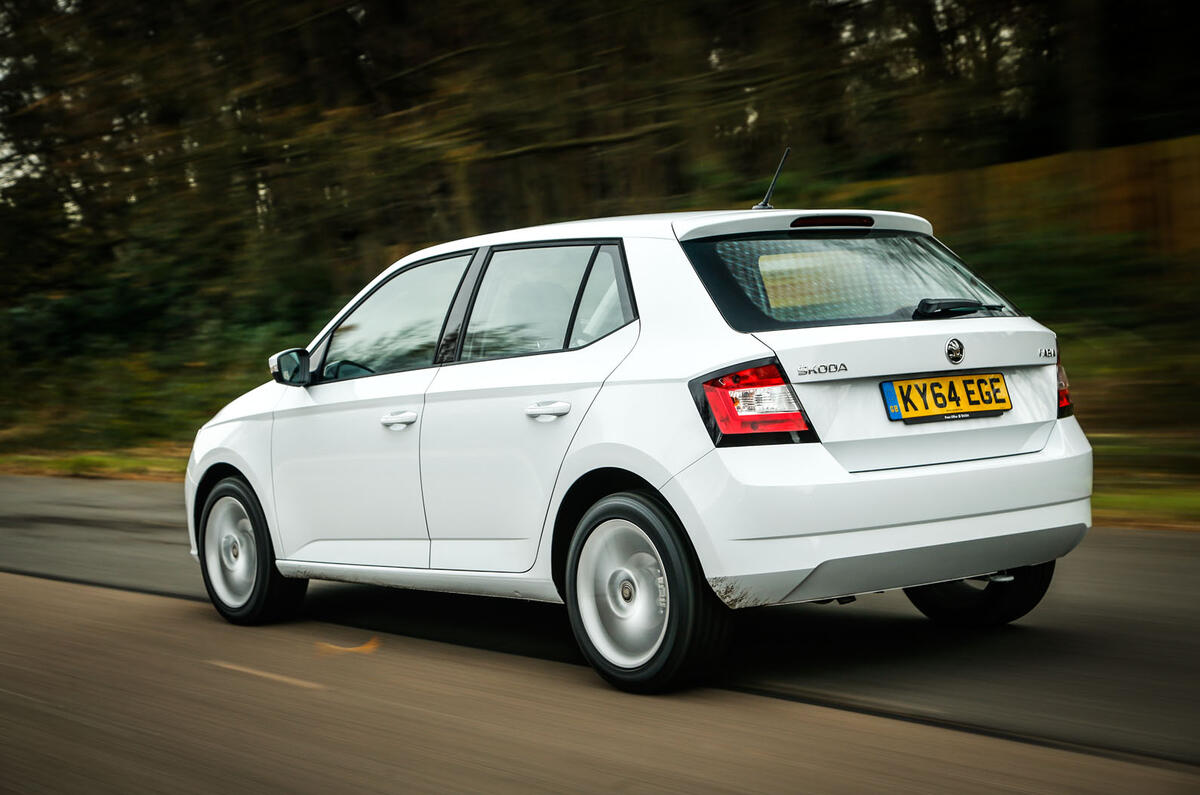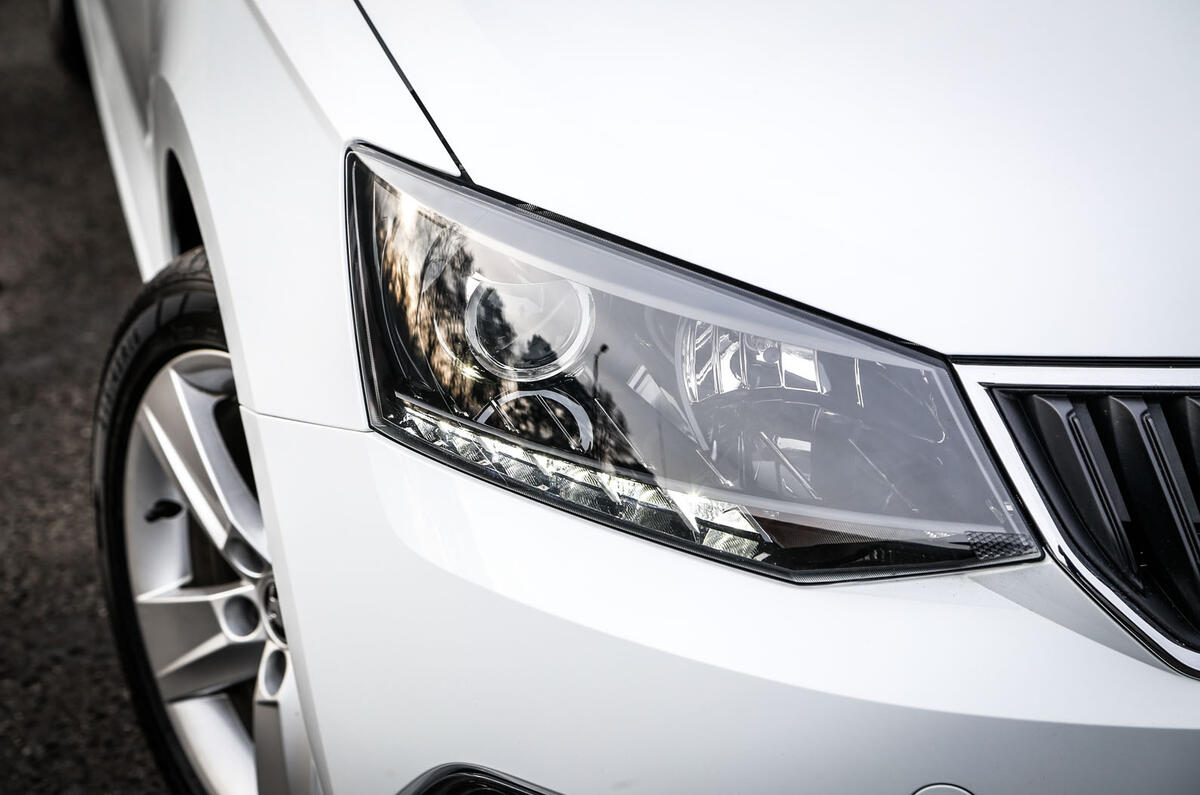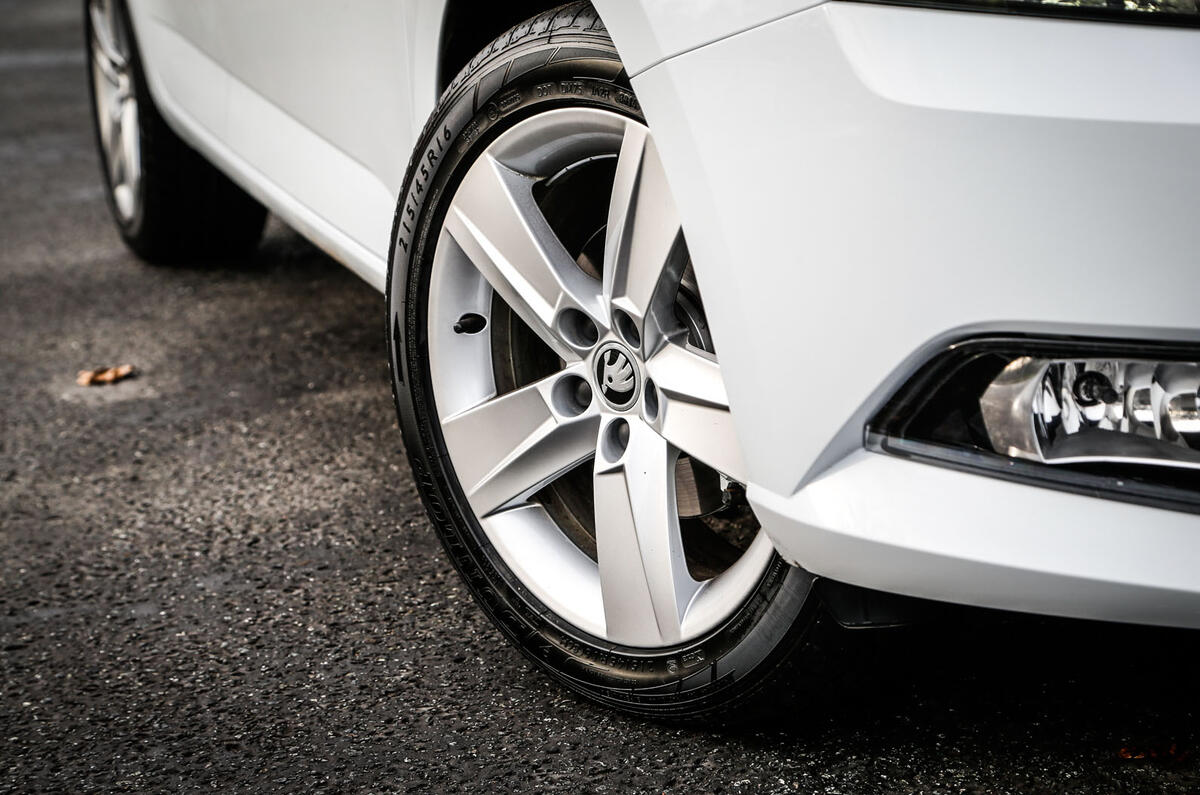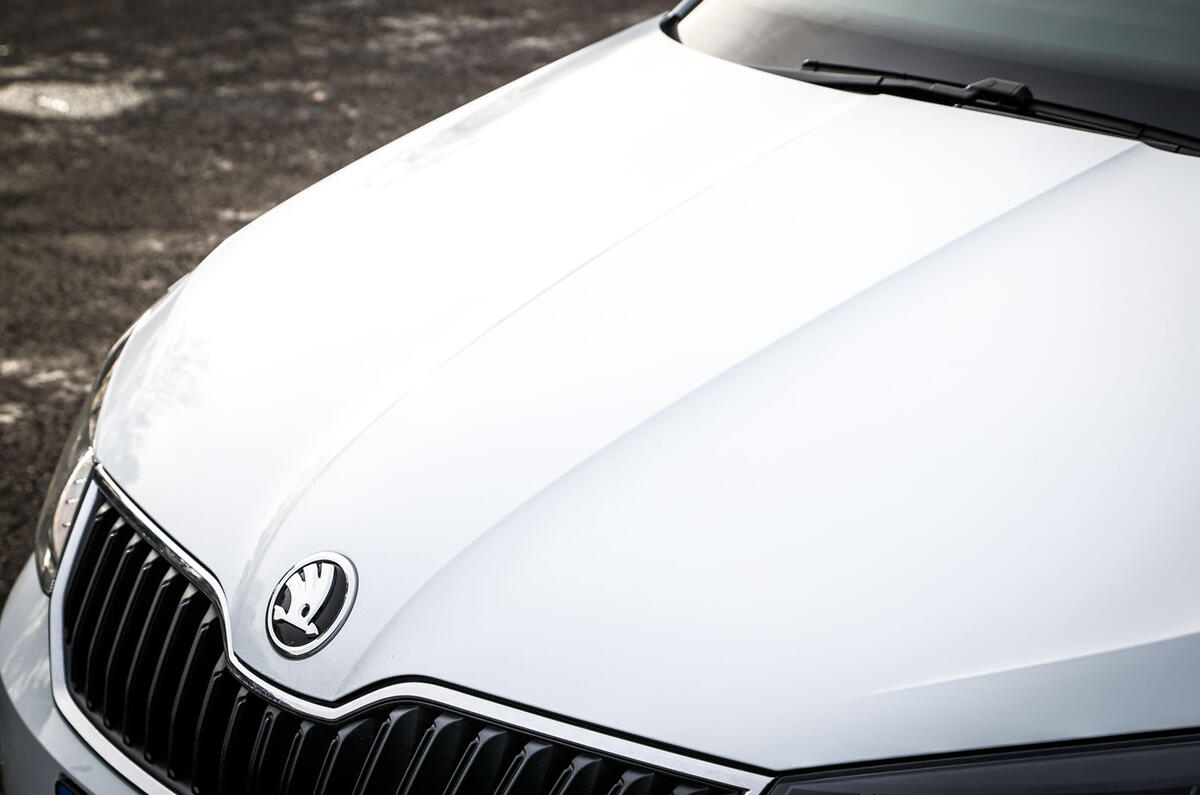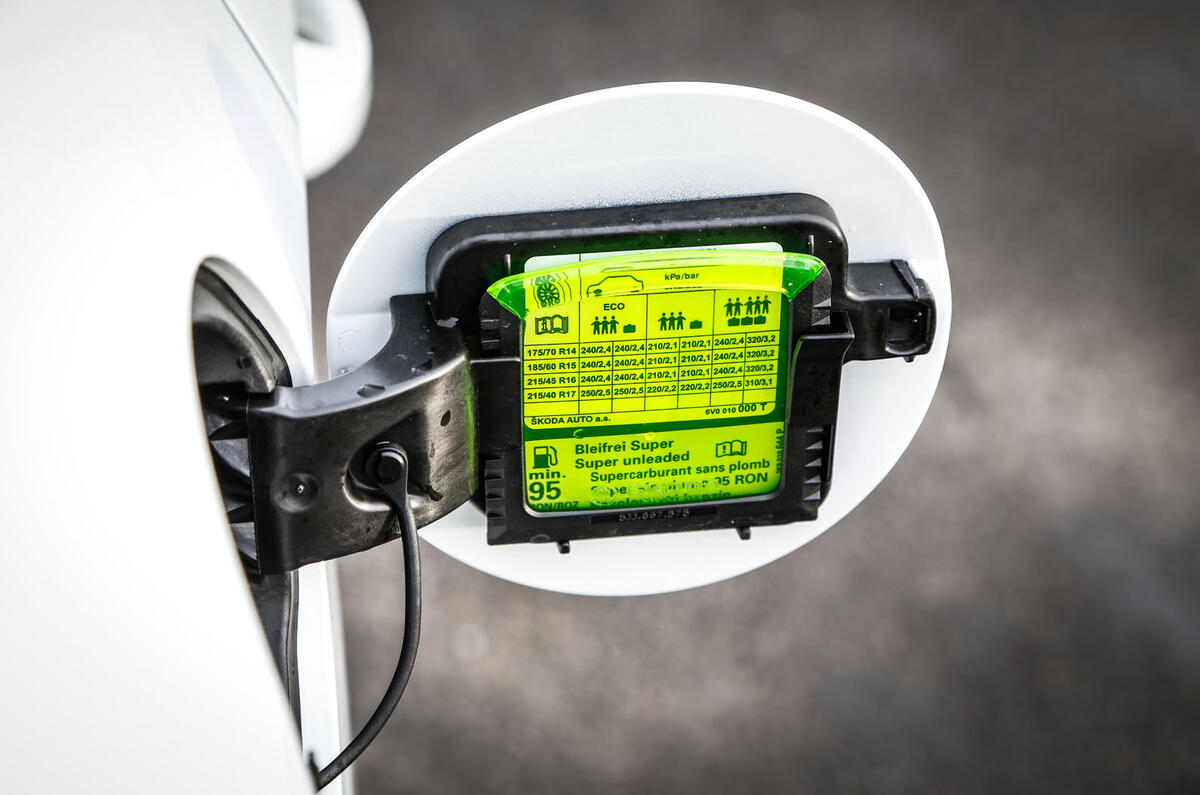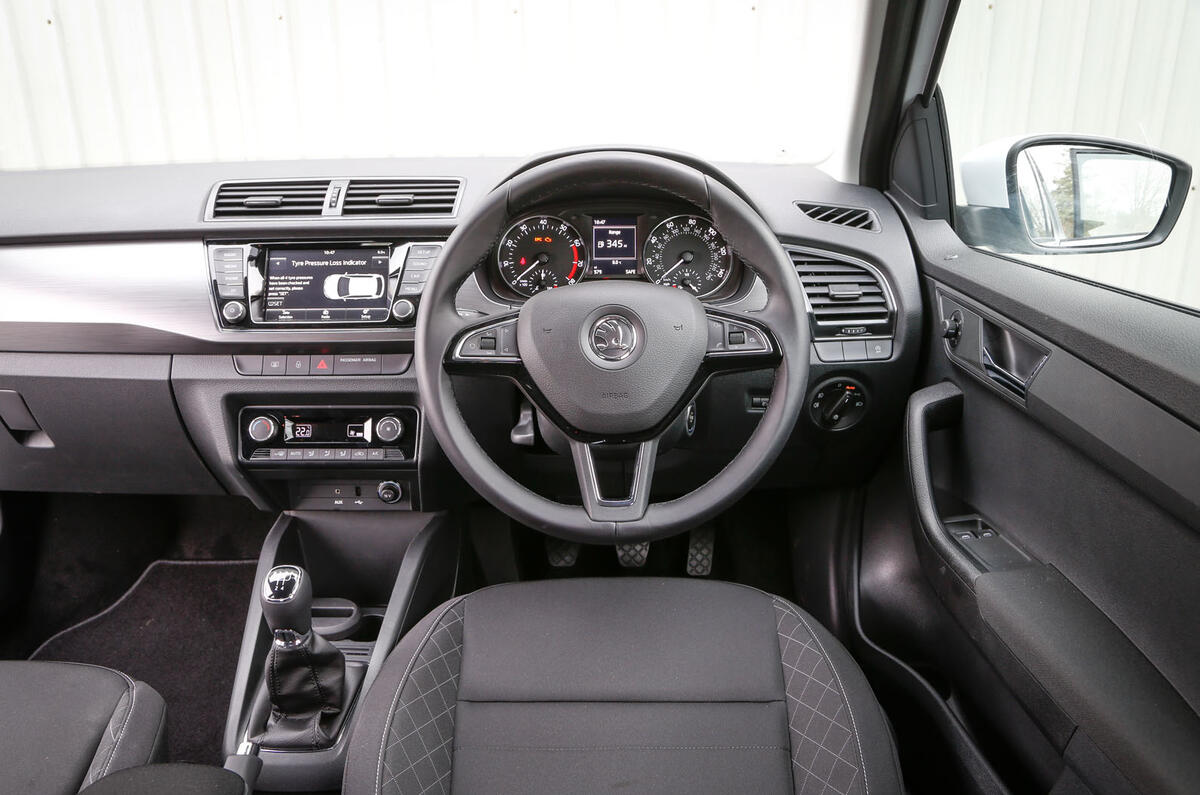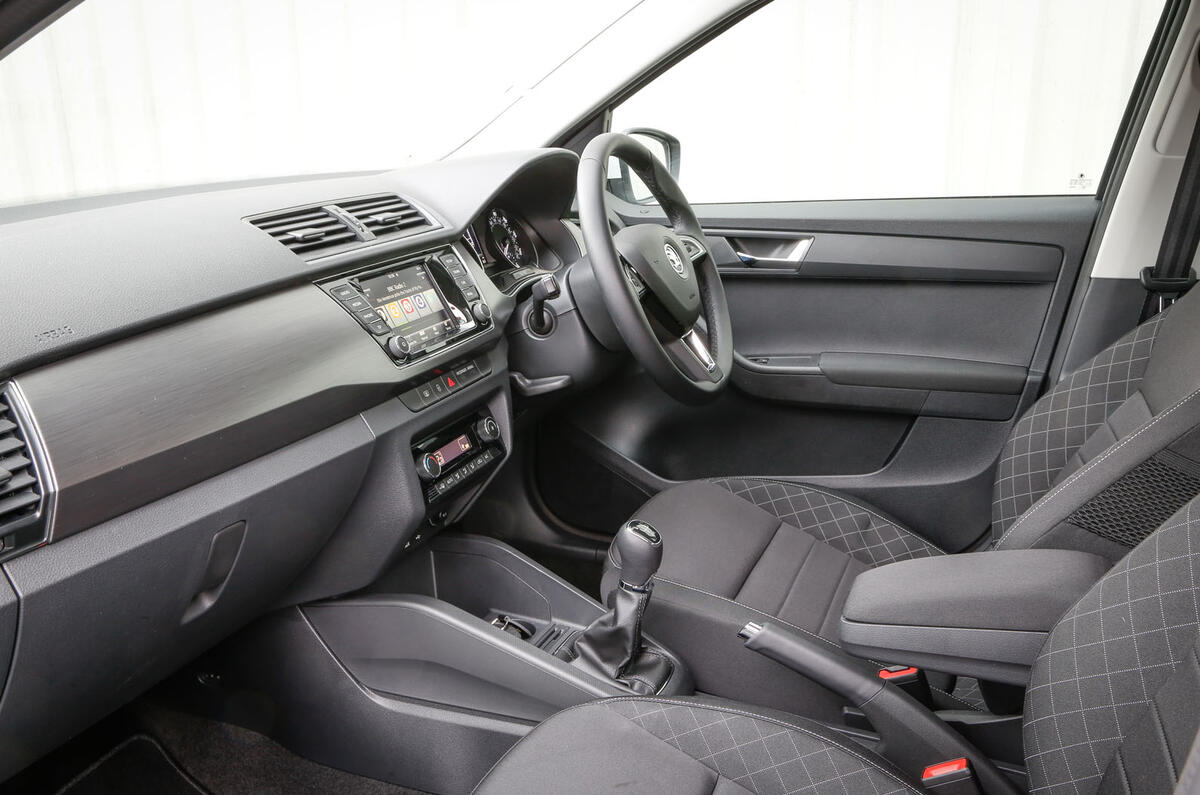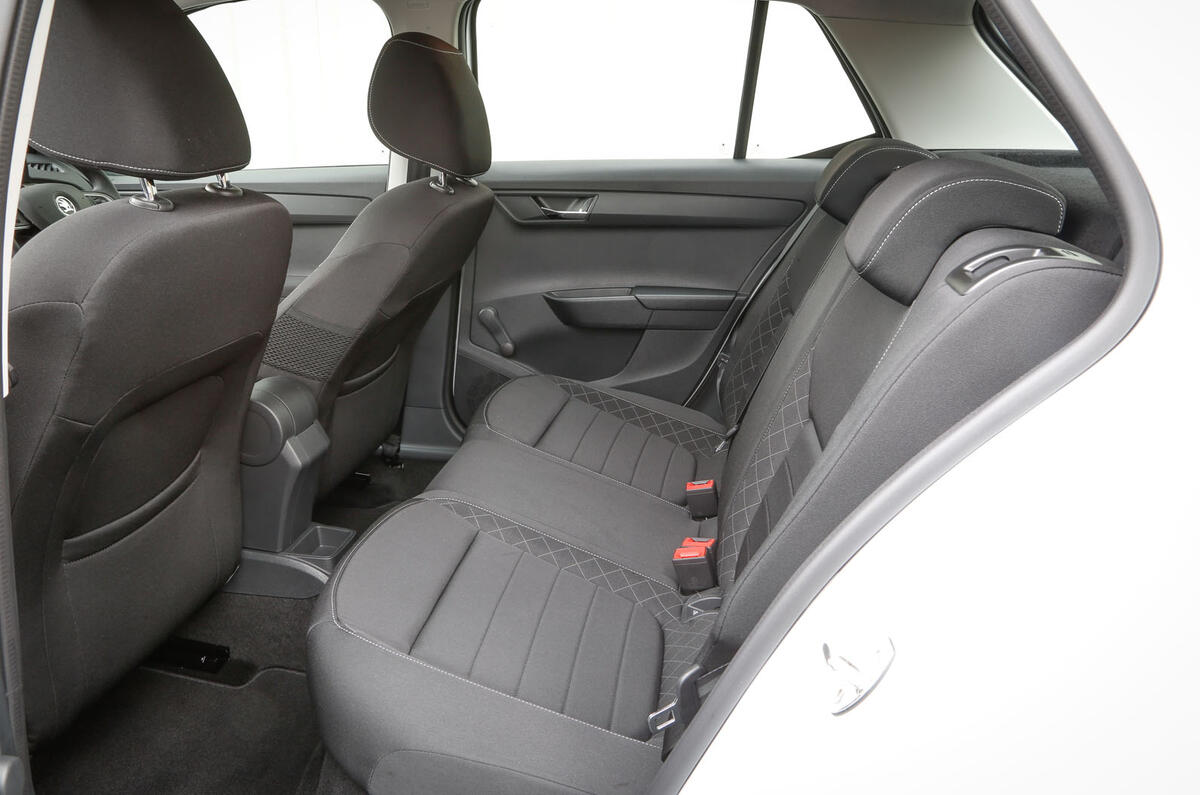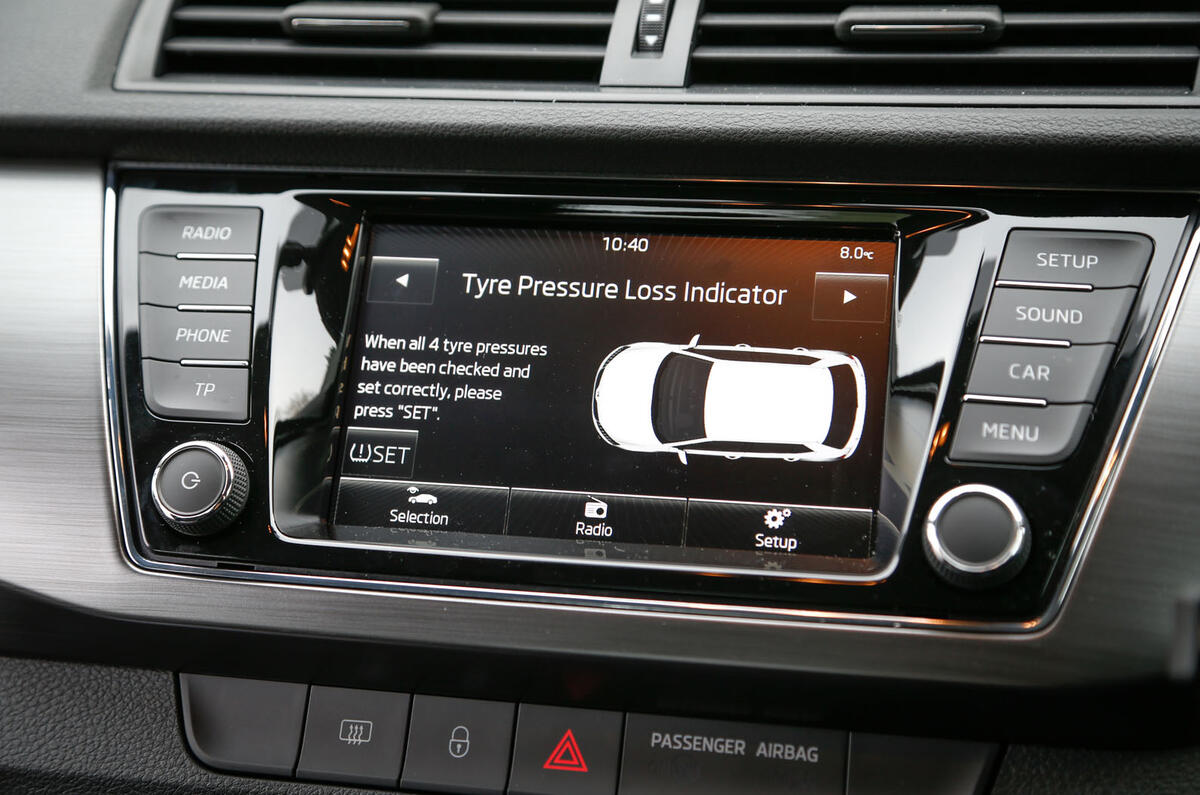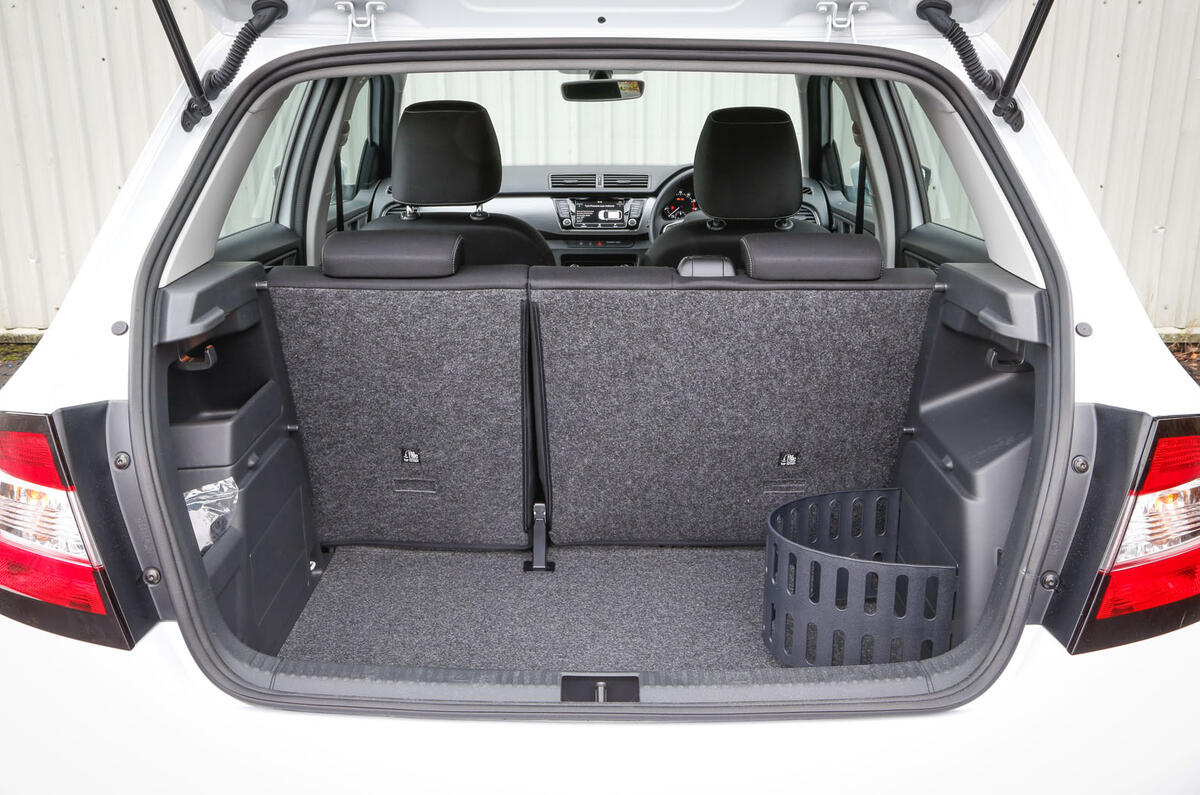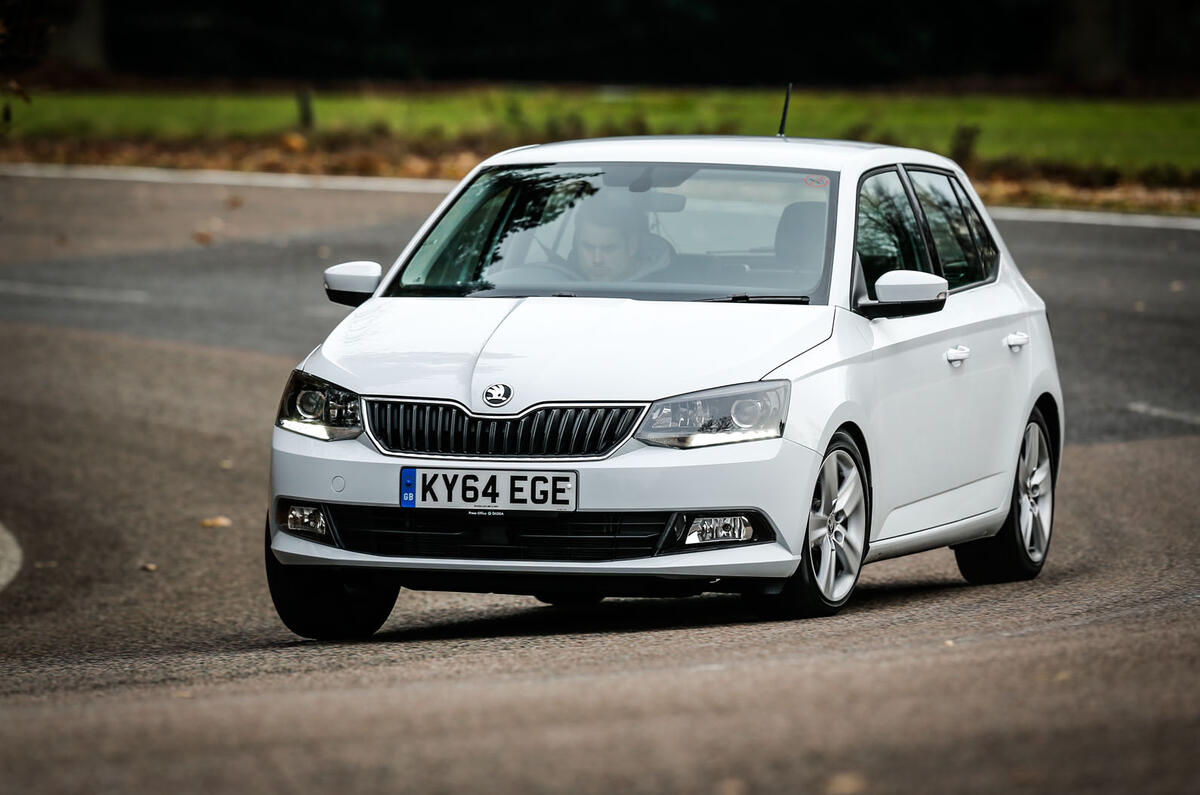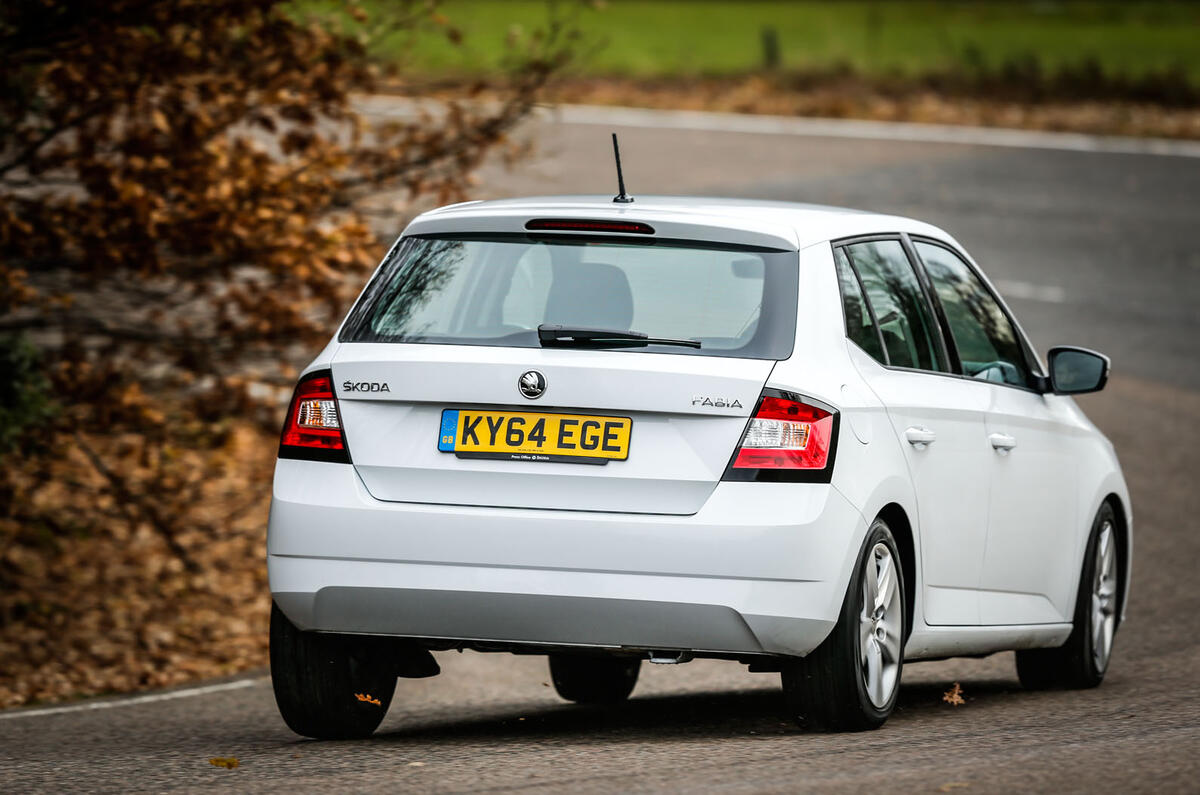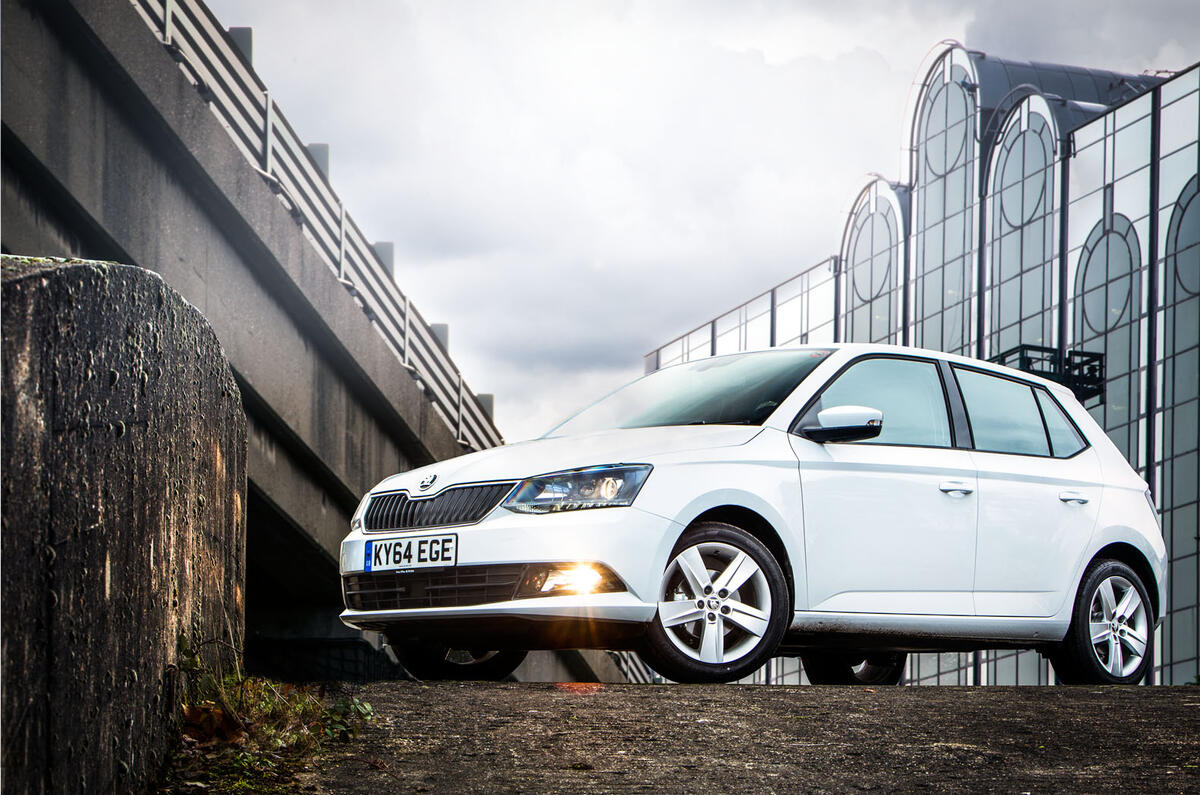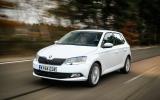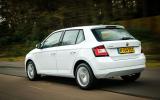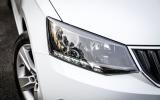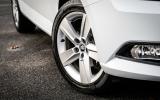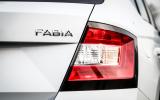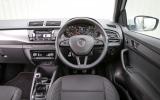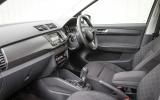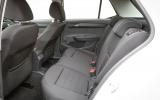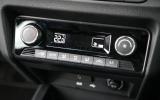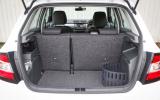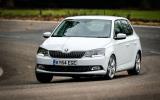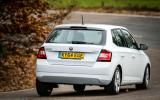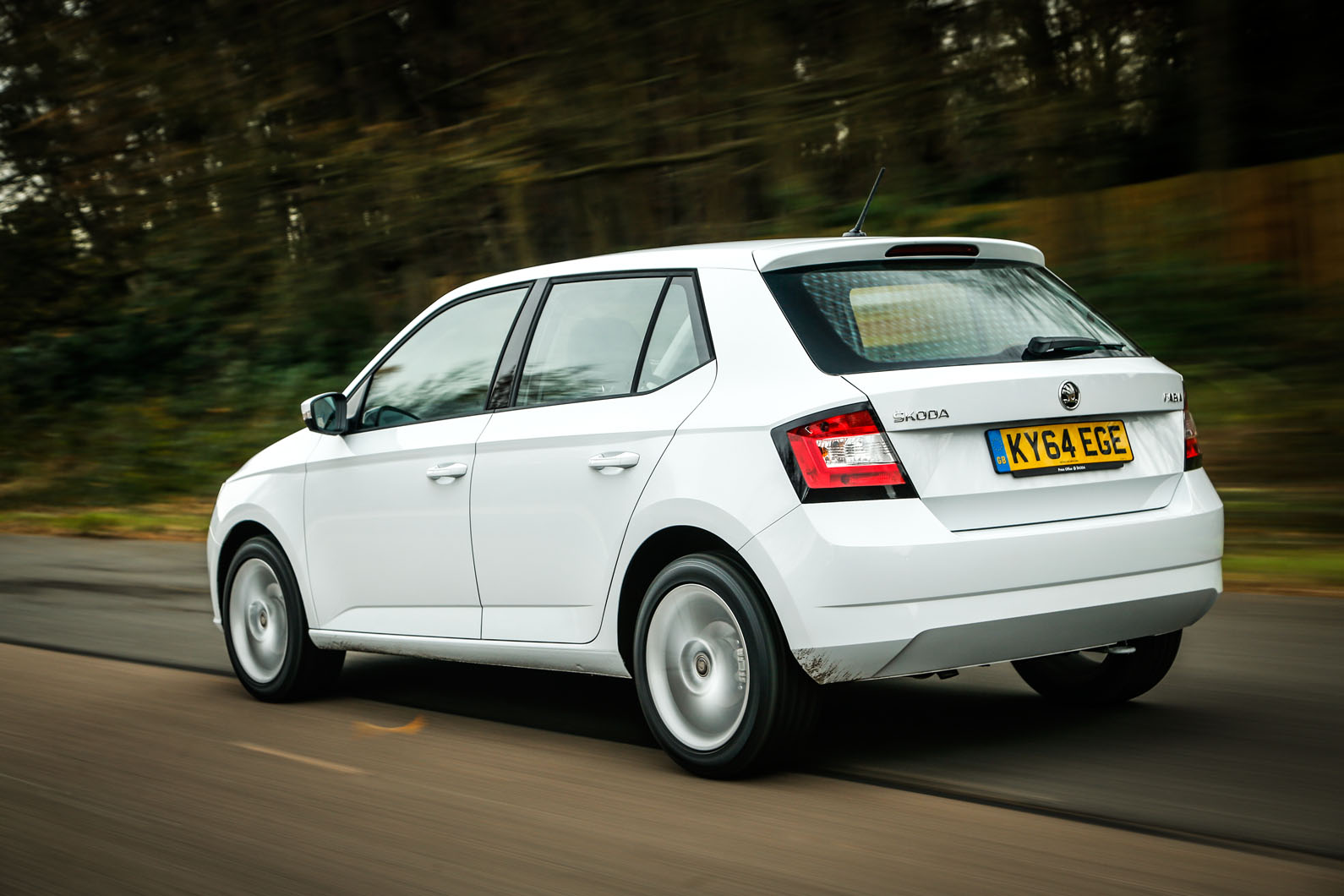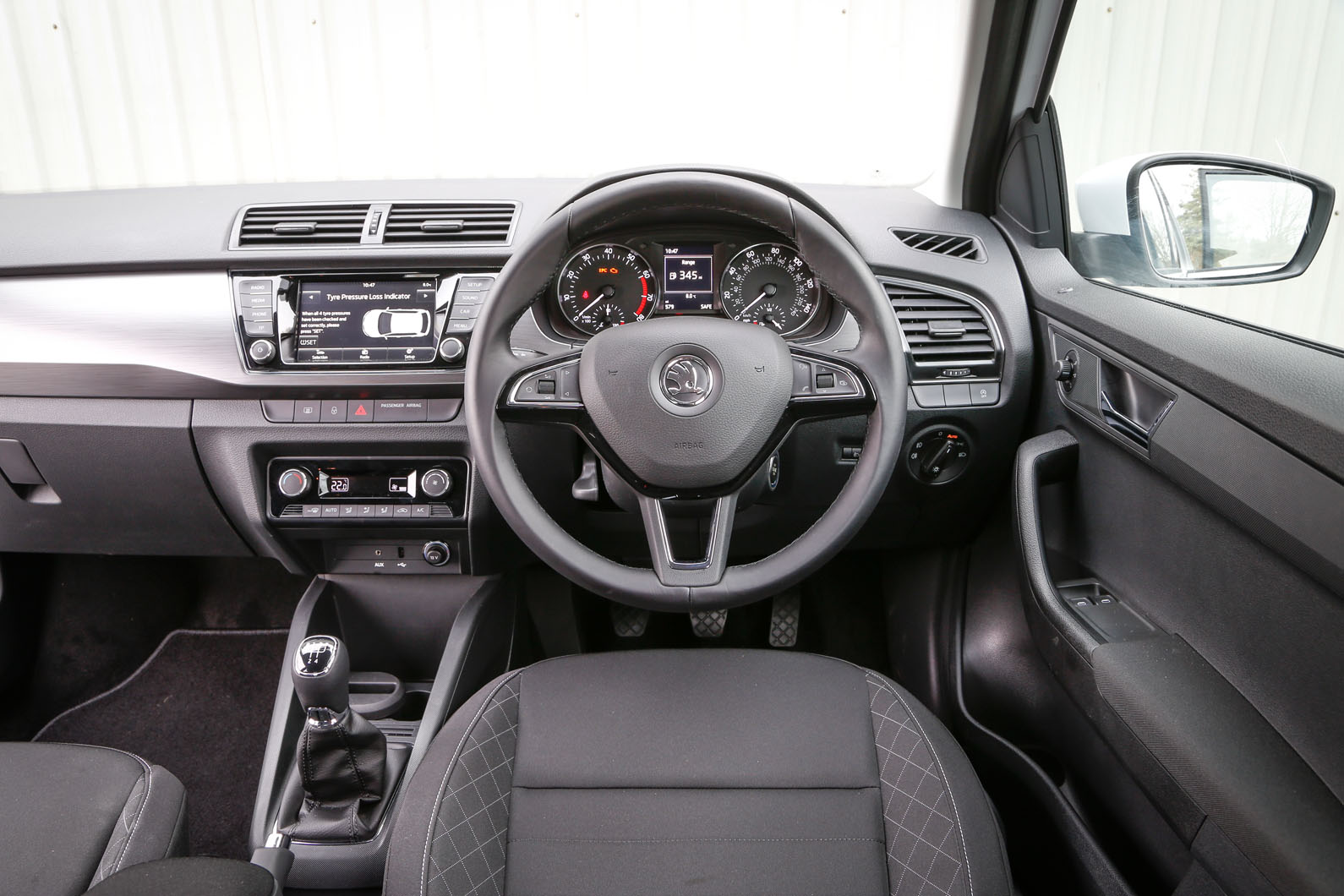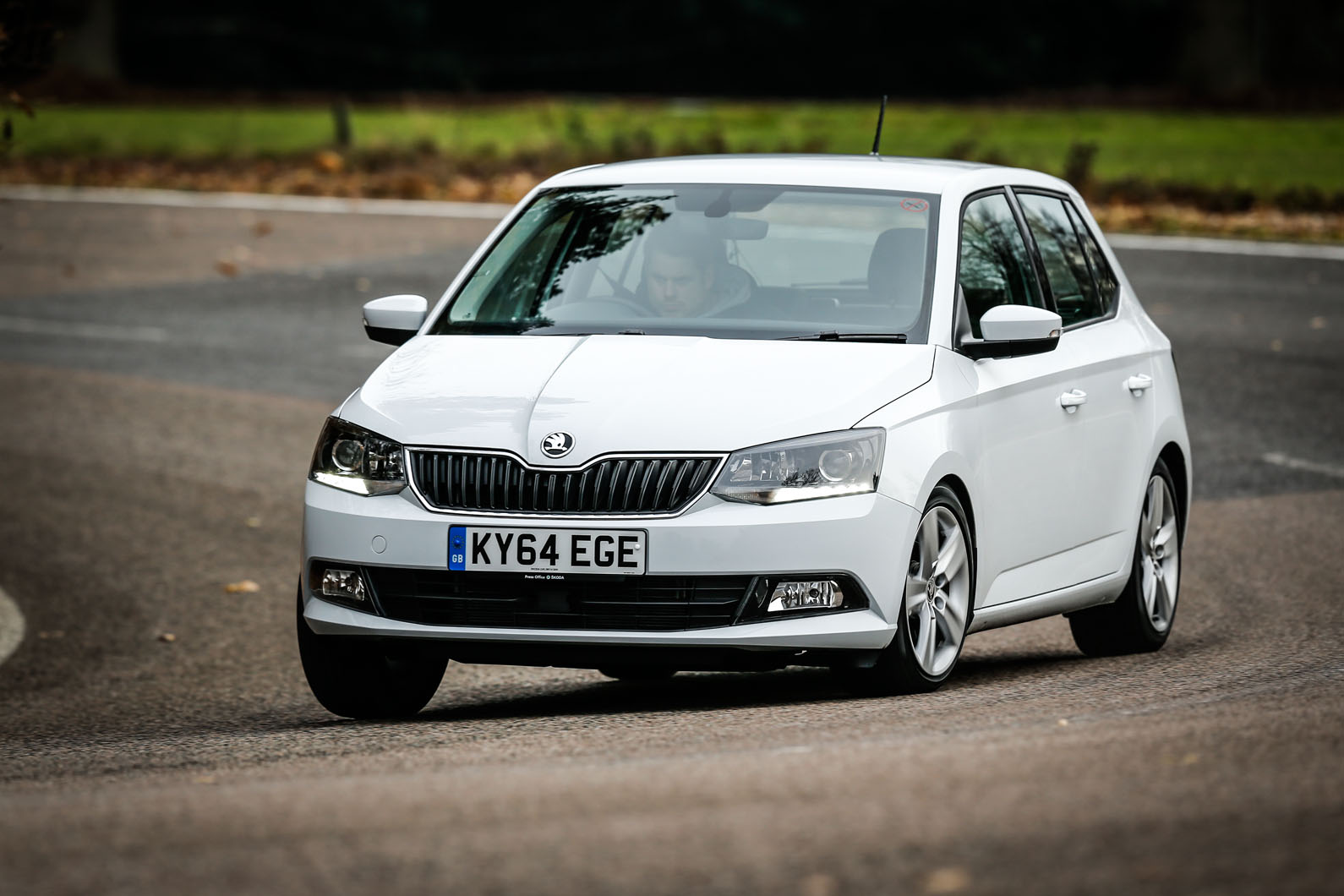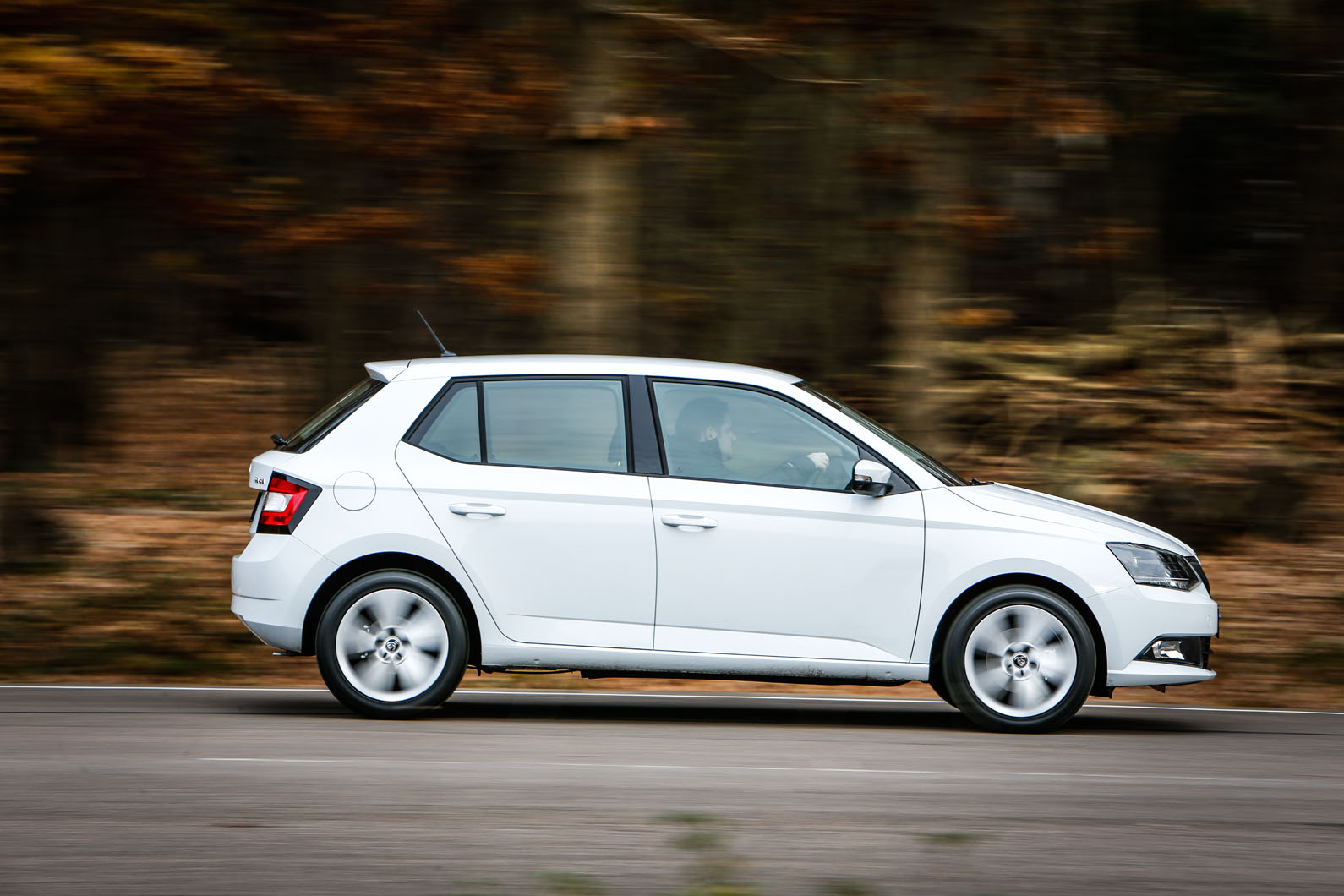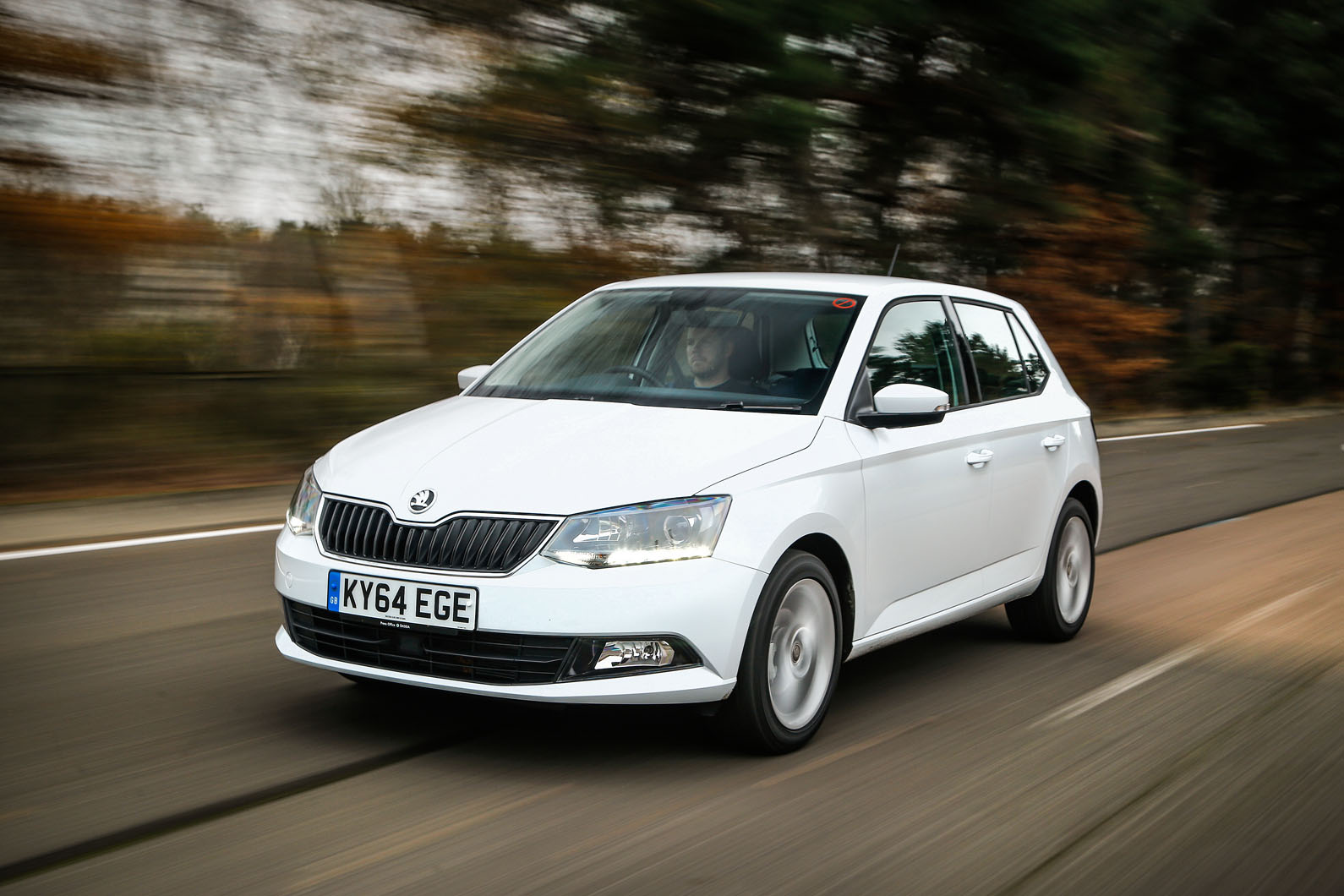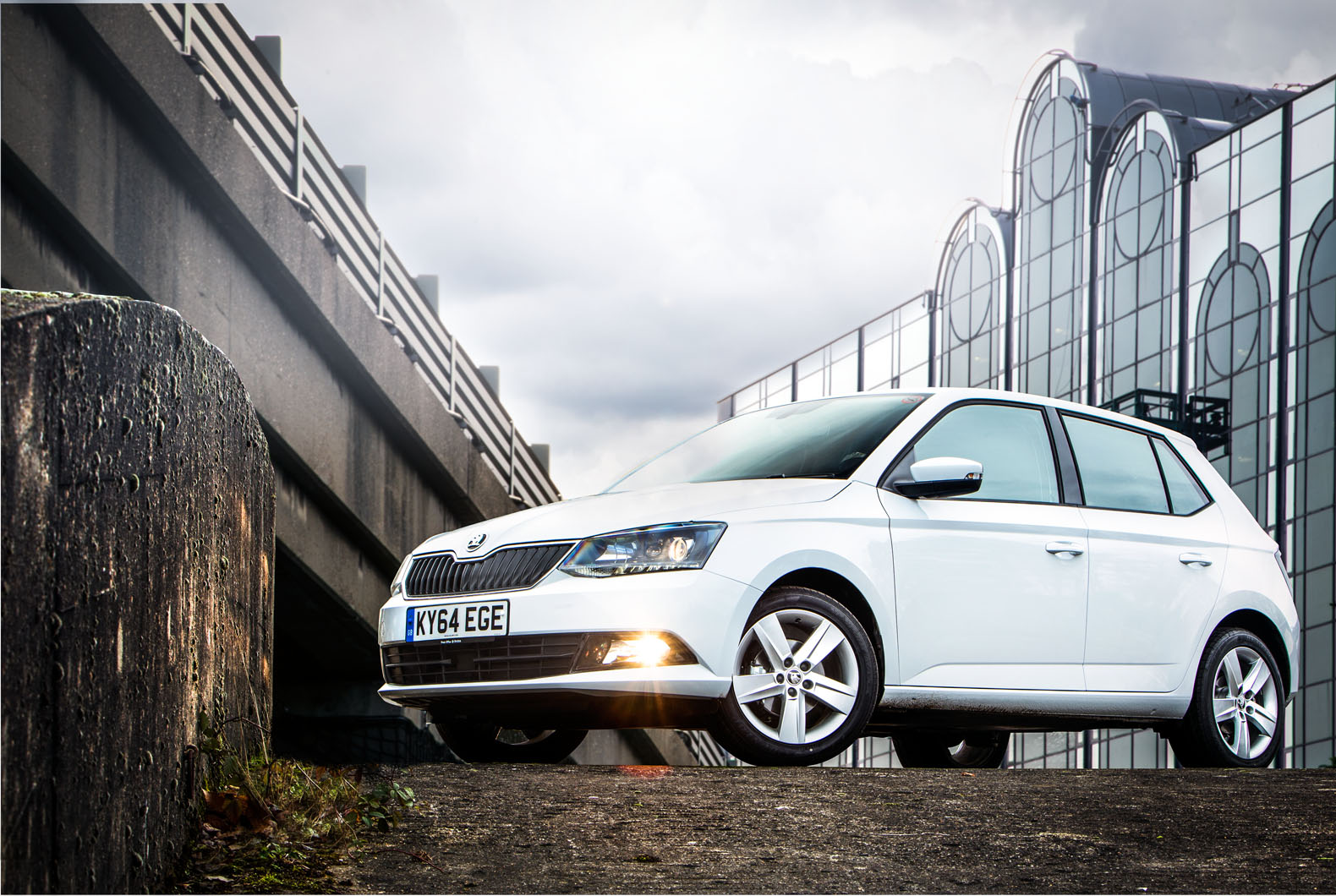Three engines are available in the Fabia, with six different variants to choose from. The range kicks off with the 1.0-litre three-pot petrol taken from the Fabia's baby brother city car - the Citigo - in 59bhp and 74bhp outputs. However, these motors feel underpowered when trying to propel the Fabia's five-door frame.
Two diesel units are offered, both in the same 1.4-litre turbocharged four cylinder capacity, but in two states of tune - 89bhp and 104bhp. The 89bhp version offers a good compromise between real-world pace and being the most frugal unit offered in the Fabia range. The CO2 rating of 88g/km and claimed economy figure of 83.1mpg are the kind of numbers that will appeal to cost-conscious new car buyers.
The 1.2-litre TSI turbocharged petrol engine in 108bhp forms are the sweeter powertrains, though. Particularly the higher-powered unit. It's noticeably brisk and possesses the flexibility to cope well with town and motorway driving.
Even with the lesser 1.2-litre turbocharged petrol engine, the Fabia goes well. This is another small car that marches off from low speeds swiftly and unconditionally and doesn’t oblige drivers to even remember which gear they’re pottering around in, much less care. With 25 per cent more torque than a typical normally aspirated supermini and an even greater advantage on tractability than that implies, this Fabia picks up speed with minimal fuss.
Overtaking still requires a downshift, but nipping up to the national speed limit from town pace can be achieved comfortably in fourth gear, with meaningful acceleration available from well below 2000rpm.
That said, the Fabia isn’t as generous with its pace at moderate speeds as some rivals, largely because of its gearing. Skoda’s focus on pragmatism has resulted in the fitment of a five-speed ’box as standard in all but the more powerful petrol variant, and it is made to pull more than 26mph per 1000rpm in top gear, when five-speed superminis usually pull no more than 23mph.
The 89bhp 1.2 TSI’s 118lb ft of torque allows the car to pull those long ratios without trouble most of the time. Steep gradients can suddenly make you aware of the large gaps between second, third and fourth gears, though, and while the engine is smooth and refined through most of the rev range, it does get a bit wheezy above 5000rpm.
The pedals and gearshift feel substantial and slick, and they’re a pleasure to use. Use the gearlever frequently and keep the crankshaft spinning and the car feels a little peppier than the supermini norm. If you want an automatic Fabia, which uses the seven-speed DSG ‘box, your choice is either the 89bhp diesel or the 98bhp 1.2 petrol turbo.
Our 0-60mph clocking was done in less than ideal conditions and we can easily believe that, on a dry day, this would be a sub-11.0sec car on account of its capacity to hit 60mph in second gear.
Still, you’ll need to buy something with more than 100bhp to go quicker. Drive the Fabia with enthusiasm, though, and you can forget about good fuel economy. However, a restrained style allows you to approach 50mpg on a mixed route, as our economy test results prove.
So the Fabia is frugal enough in typical daily use, but only averagely so for a modern car of its size.


